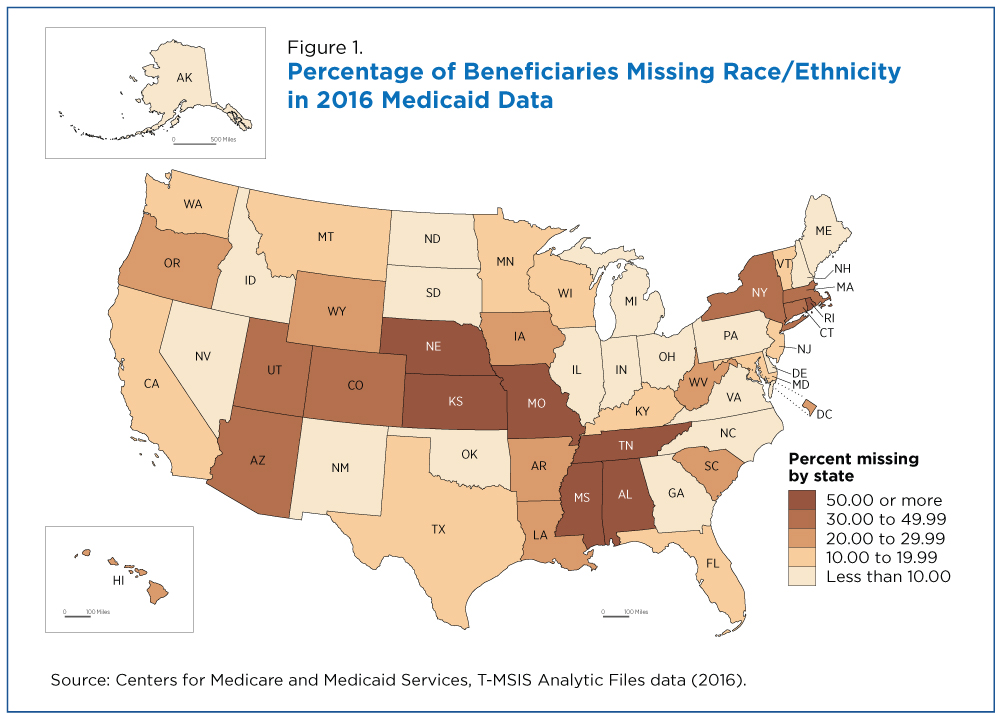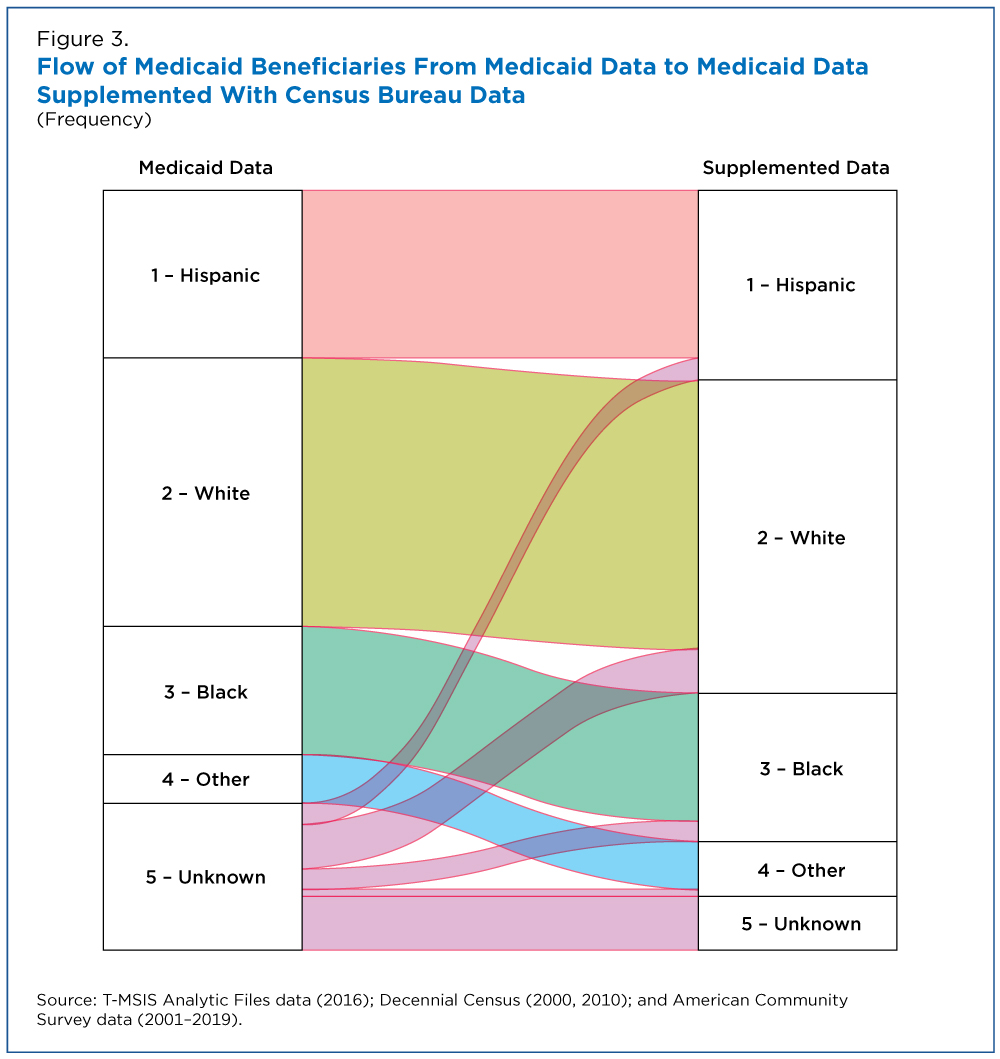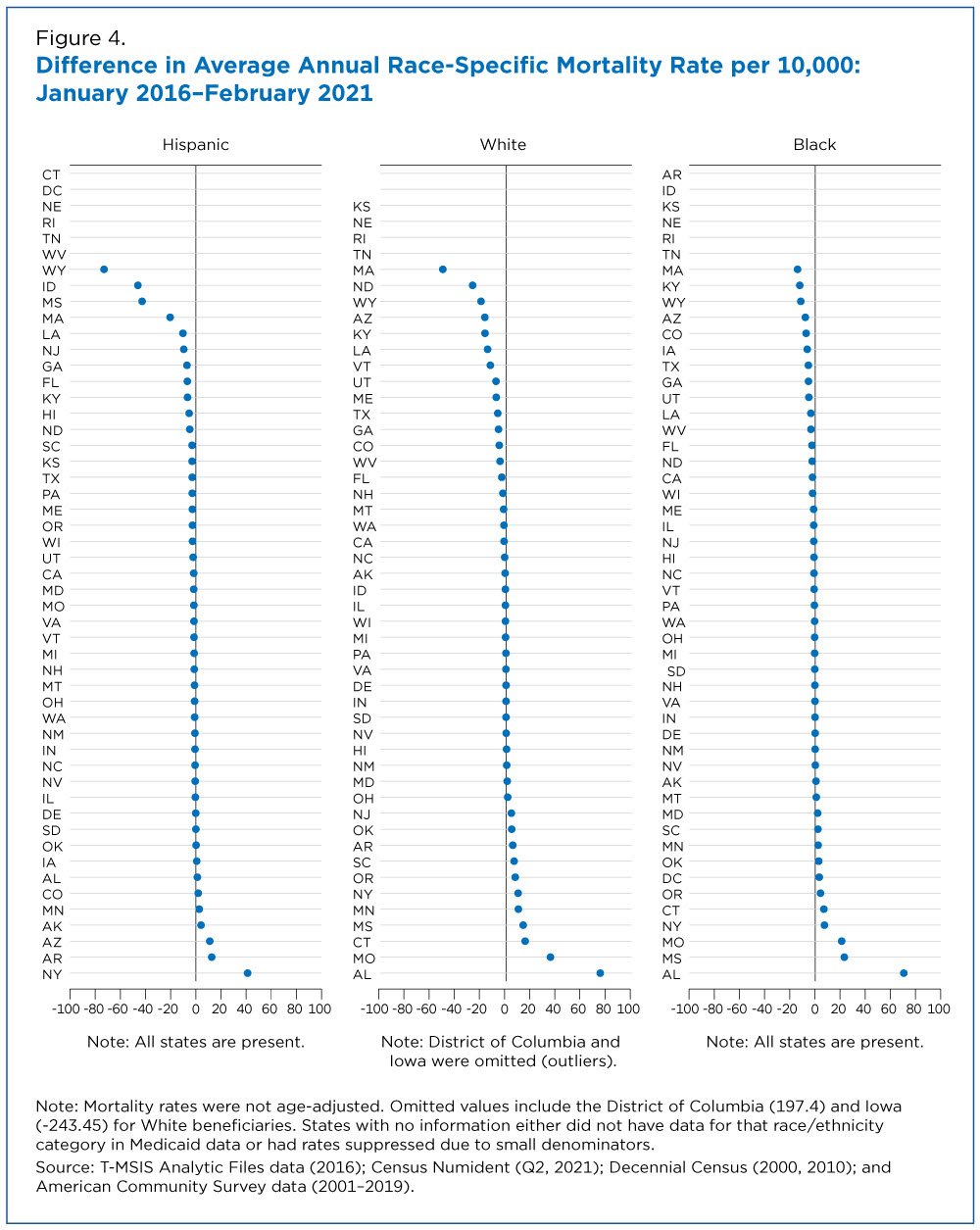New Research Links Medicaid and Census Bureau Data to Improve Study of Racial/Ethnic Health Disparities
How can we identify and track racial and ethnic health disparities when Medicaid enrollment records are missing key information on beneficiaries?
The lack of data on race and ethnicity in Medicaid enrollment records is an increasingly significant public and policy challenge that the U.S. Census Bureau is trying to address.
New Census Bureau research found that linking Medicaid data with decennial census and American Community Survey (ACS) data could help identify gaps and evaluate the quality of race/ethnicity information in Medicaid records.
This work further enhances the utility of Census Bureau survey data and creates new estimates related to racial and ethnic health disparities, social determinants of health, and population health.
Overall, about 19% of Medicaid beneficiaries were missing race/ethnicity information but this rate varied considerably across states.
The data linkage strategy used in this research can improve the identification and mitigation of racial/ethnic disparities and reduce the rate of missing race/ethnicity information in Medicaid records by about 63%.
Additionally, researchers found that failing to take into account Medicaid records with missing data may skew or bias estimates of racial/ethnic disparities in health outcomes like mortality in some states.
Despite this bias, Medicaid records are frequently used to study racial/ethnic health disparities.
Linking Data
This research was conducted by the Enhancing Health Data (EHealth) Program — an initiative aimed at expanding the utility of Census Bureau data by linking them with new sources of health data.
It relied on 2016 Medicaid enrollment data (Transformed Medicaid Statistical Information System (T-MSIS) Analytic Files (TAF)) for all 50 states and the District of Columbia. Race and ethnicity information was combined into one measure.
Medicaid data were linked with race/ethnicity information from the 2000 and 2010 censuses and the 2001-2019 ACS 1-year estimates.
Finally, these data were linked with mortality data (between January 2016 and June 2021) from the Census Numerical Identification File (Numident).
The data used in this research were restricted microdata that could be used only for approved Census Bureau research projects. Only a limited number of researchers used the linked data for statistical purposes and they did not have access to personally identifiable information.
Missing Race/Ethnicity Information
Overall, about 19% of Medicaid beneficiaries were missing race/ethnicity information but this rate varied considerably across states (Figure 1).
About one-third of states (18) were missing less than 10% of beneficiaries’ race/ethnicity information. Three states (Nebraska, Rhode Island and Tennessee) did not have race/ethnicity information for any of their Medicaid beneficiaries (Figure 1).
After linking the Medicaid enrollment data with decennial census and ACS data, the share of beneficiaries with missing race/ethnicity information was reduced by about 63%, from 19% to 7%.
Most states (36) had missing race/ethnicity information for a 10% or smaller share of beneficiaries and no states were missing information for more than half of their beneficiaries (Figure 2).
The beneficiaries whose missing information could be supplemented using Census Bureau data were most likely to be categorized as White, Hispanic, Black and Other Race, respectively (Figure 3). A sizeable portion of beneficiaries (7%) were still missing race/ethnicity information even after the linkage.
Missing Data and Mortality Estimates
When researchers omit beneficiaries with missing race/ethnicity information from analysis, estimates of mortality rates by race may be biased in some states.
Figure 4 shows differences in average annual mortality rates between Medicaid data alone and Medicaid data supplemented with Census Bureau data for each state and racial/ethnic group.
For Hispanic, White, and Black beneficiaries, most states hovered close to zero, indicating very little difference in race-specific mortality rate between the two measures, resulting in unbiased estimates of mortality even if researchers rely solely on Medicaid records.
For these states, researchers who focused only on Medicaid beneficiaries with complete race/ethnicity information were likely to produce unbiased estimates of race-specific mortality rates.
However, there were important exceptions.
Several states exhibited high rates of mortality bias including (in order of magnitude):
- Wyoming, Idaho, Mississippi, New York and Massachusetts for Hispanic beneficiaries.
- Iowa, the District of Columbia, Alabama, Massachusetts, Missouri and North Dakota for White beneficiaries.
- Alabama, Mississippi and Missouri for Black beneficiaries.
The recently released working paper provides a more detailed discussion of these findings and methods.
Without high quality data, it is not possible to address issues of health equity and improve the overall health of individuals and communities.
Results from this working paper demonstrate the ability to exercise the utility of Census Bureau data in an innovative manner that improves researchers’ ability to understand and explore issues related to health and health disparities in the U.S.
Related Statistics
Subscribe
Our email newsletter is sent out on the day we publish a story. Get an alert directly in your inbox to read, share and blog about our newest stories.
Contact our Public Information Office for media inquiries or interviews.
-
America Counts StoryMore Education Does Not Erase Racial Disparities in Health CoverageMarch 08, 2023Adults with a high school education or less have higher uninsured rates than those more educated. Racial/ethnic inequalities exist even among the more educated.
-
America Counts StoryWho Is Receiving Social Safety Net Benefits?May 24, 2022A new data tool allows users to explore thousands of social safety statistics 2013-2019 and demographic and socioeconomic characteristics of recipients.
-
America Counts StoryOne in Seven Social Safety Net Recipients in 2017 Were College GradsMay 12, 2021At least 3.7 million college graduates participated in social safety net programs in 2017.
-
EmploymentThe Stories Behind Census Numbers in 2025December 22, 2025A year-end review of America Counts stories on everything from families and housing to business and income.
-
Families and Living ArrangementsMore First-Time Moms Live With an Unmarried PartnerDecember 16, 2025About a quarter of all first-time mothers were cohabiting at the time of childbirth in the early 2020s. College-educated moms were more likely to be married.
-
Business and EconomyState Governments Parlay Sports Betting Into Tax WindfallDecember 10, 2025Total state-level sports betting tax revenues has increased 382% since the third quarter of 2021, when data collection began.
-
EmploymentU.S. Workforce is Aging, Especially in Some FirmsDecember 02, 2025Firms in sectors like utilities and manufacturing and states like Maine are more likely to have a high share of workers over age 55.








